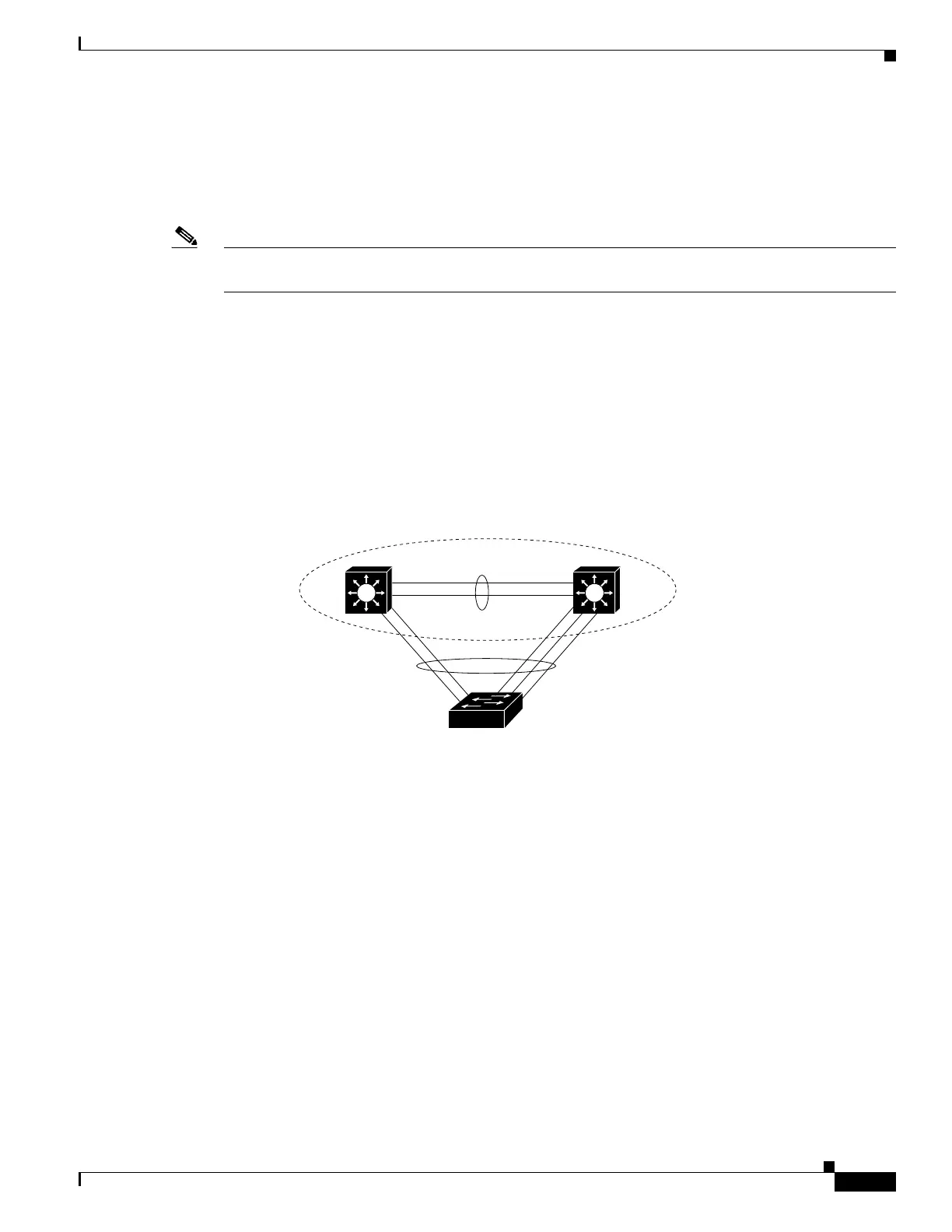5-5
Software Configuration Guide—Release IOS XE 3.6.0E and IOS 15.2(2)SG
OL-30933-01
Chapter 5 Configuring Virtual Switching Systems
Understanding Virtual Switching Systems
• service-policy
• shutdown
Multichassis EtherChannel
Note Beginning with Cisco Release IOS XE 3.5.0E and IOS 15.2(1)SG, Layer 3 MEC is supported on the
Catalyst 4500 series switch. Cisco Release IOS XE 3.4.0SG does not support Layer 3 MEC.
An EtherChannel (also known as a port channel) is a collection of two or more physical links that
combine to form one logical link. Layer 2 protocols operate on the EtherChannel as a single logical
entity. A VSS enables the creation of Multi-Chassis EtherChannel (MEC), which is an Etherchannel
whose member ports can be distributed across the member switches in a VSS. Because non-VSS
switches connected to a VSS view the MEC as a standard EtherChannel, non-VSS switches can connect
in a dual homed manner. Figure 5-4 displays a dual-homed connection for an MEC into the VSS; VSS
is seen as a single logical switch. Traffic traversing an MEC can be load balanced locally within a VSS
member switch much as in standard EtherChannels. Cisco MEC supports the bundling protocols LACP
and PAgP as well as ON mode.
Figure 5-4 VSS with MEC
VSS supports a maximum of 256 EtherChannels. This limit applies to the total number of regular
EtherChannels and MECs. Because the VSL requires two EtherChannel numbers (one for each switch
in the VSS), there are 254 user-configurable EtherChannels.
For information on how to configure Layer 3 Multichassis EtherChannels, see For information on how
to configure Layer 3 Multichassis EtherChannels, see, page 5-5
VSS Functionality
The following sections describe the main functionality of a VSS:
• Redundancy and High Availability, page 5-6
• Packet Handling, page 5-6
181323
VSL
Chassis 1 Chassis 2
MEC

